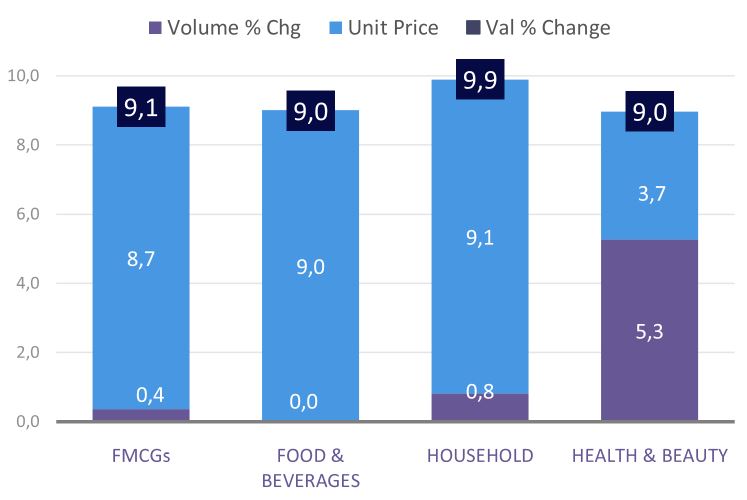NielsenIQ: At +8.9% the total turnover of the retail food trade for 2023
FMCGs Food and Beverages showed a positive trend
Monday, January 29, 2024
The turnover of the organized food retail trade showed a positive trend of +8.9%, based on the latest NielsenIQ measurement data for the whole of 2023. It is noted that inflationary pressures are the almost exclusive growth driver of the sector. In particular, with regard to fast-moving consumer goods (FMCGs), NielsenIQ reports significant double-digit price growth in the first six months of the year, while adding that in the second half of the year, there is a de-escalation in inflationary pressures, with a corresponding boost in volumes and consumption.
Overall, for 2023, FMCGs increased their sales in value by 9.1%, while it is noteworthy that while prices increased with the same intensity as in 2022 (+8.7%) demand showed a marginal increase, at +0.4%. Regarding the individual major categories of FMCGs, Food and Beverages showed a positive trend of +9%, with demand remaining unchanged compared to 2022. For reference, the highest sales growth in value was recorded by Household Products as a whole with their unit sales also increasing, by 0.8%. Vaios Dimoragas, CEO of NielsenIQ, commented on this, among other things: "In practice, the total volumes were not significantly affected and in fact at the end of the year they also marked a marginal increase, but obviously with different behavior per category and, as the case may be, with differentiated product mix’.
Large stores continued their growth path with +12.4%
Regarding the different typologies of stores, for another year, the large halls of more than 2500 sq.m. (hypermarkets) continued their development course at +12.4%, while the relatively lowest growth rate (+7.2%) was presented by the halls between 1000-2500 sq.m., which however make up more than 40% of the sector’s turnover. Observing the performance of the different geographical areas, it is worth commenting on the fact that in Athens and Thessaloniki the turnover of the retail food trade increased by 8.1% and 8.3% respectively, while higher positive trends were shown in general by the region and especially by the areas of Crete (+12.9%) and the Peloponnese (+9.5%), with inflationary pressures being significantly more intense than in the urban centers.

Source: Food Reporter #1105/2024-01-23
